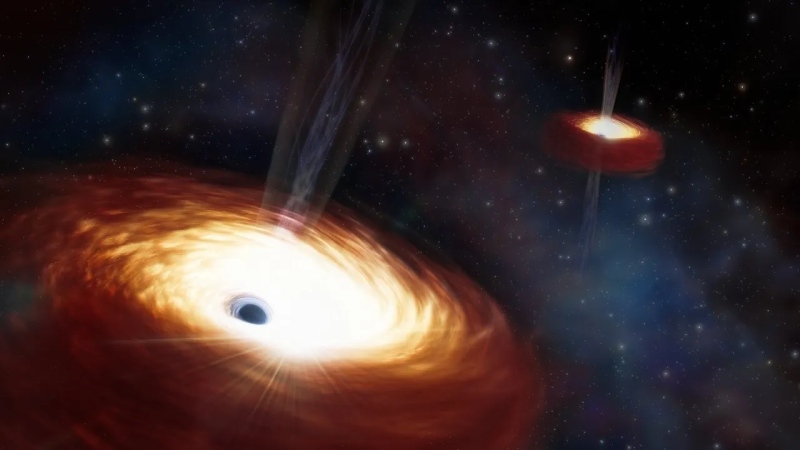Scientists have observed the oldest known black hole collision, which is thought to have occurred when the universe was only 740 million years old, according to the James Webb Space Telescope.
Astronomers have observed this kind of merging for the first time, and it seems to be the first in the universe’s history. It took place in the ZS7 galactic system.
Massive cosmic objects known as black holes are dispersed throughout the cosmos, and their gravitational fields are so powerful that light cannot escape their event horizons.
The sound of two black holes merging is terrifying, and the process takes time as they combine to form one single object.
Scientists discovered that one black hole has 50 million times the mass of the Sun:
The study’s principal author, Hannah Ubler, an astronomer at the University of Cambridge, stated in an ESA (European Space Agency) announcement, “Our findings suggest that merging is an important route through which black holes can rapidly grow, even at cosmic dawn.”
Our results “also show that massive black holes have been shaping the evolution of galaxies from the very beginning, along with other Webb findings of active, massive black holes in the distant Universe,” a spokesperson said.
The scientists was able to spatially distinguish the two black holes because to the James Webb Telescope’s exceptionally fine eyesight, which let them comprehend some of their physical properties.
One of the Black Holes was discovered to be almost 50 million times more massive than the Sun, while the other was covered in a thick gas cloud.
The Monthly Notices of the Royal Astronomical Society published the team’s complete discovery paper.
The Laser Interferometer Space Antenna (LISA), which is a space-based gravitational wave observatory, was formally adopted by the ESA in January which set the door for the eventual operation and launch of the spacecraft.
Webb’s discoveries are telling us that lighter systems detected by LISA should be significantly more frequent than previously anticipated, according to Nora Luetzgendorf, chief project scientist for LISA at the European Space Agency, who made this statement in the press release.
We’ll probably need to modify our models to account for LISA rates in this mass range. “This is only the beginning,” she continued.
Topics #Ancient Space #black holes #Collision #Earth #galaxy #Moon #news #solar system #Sun #universe











